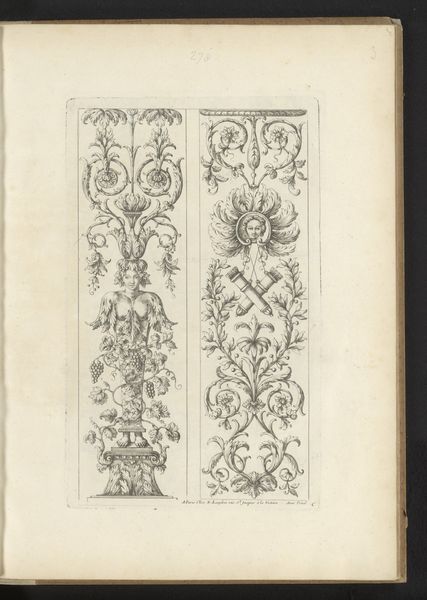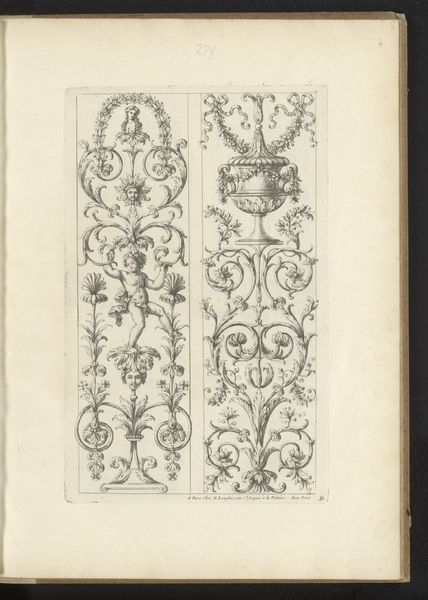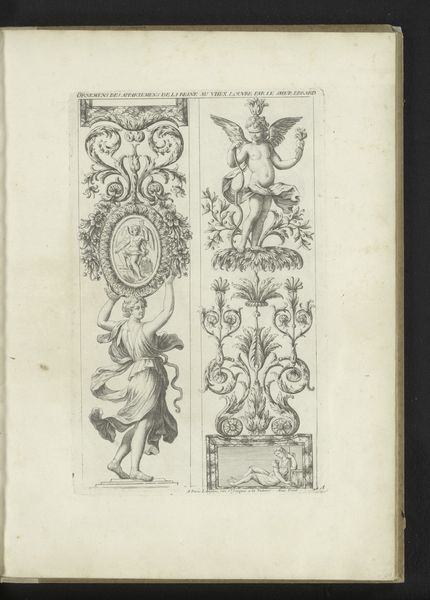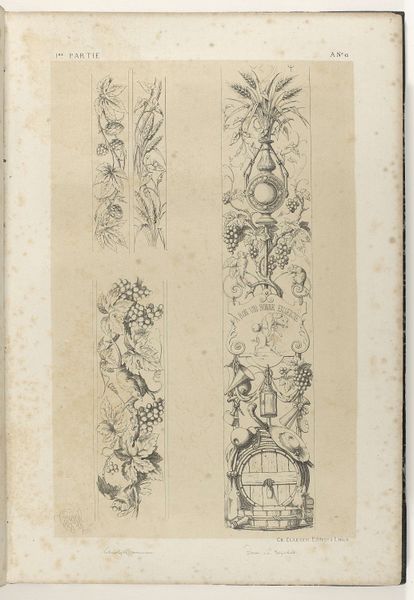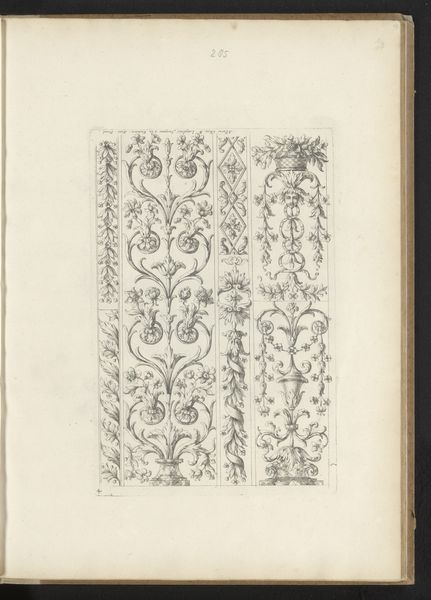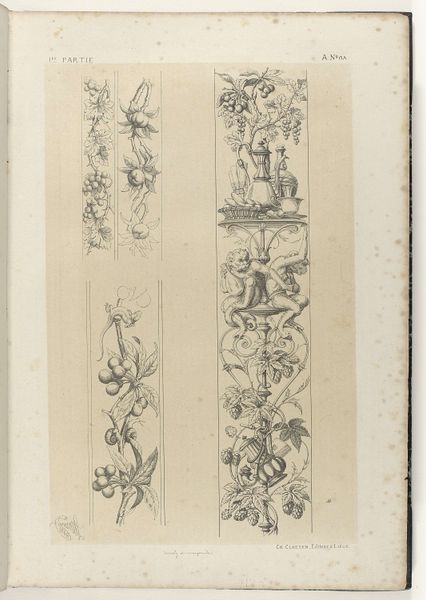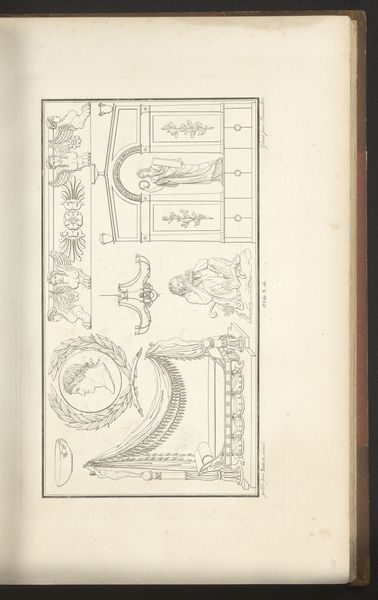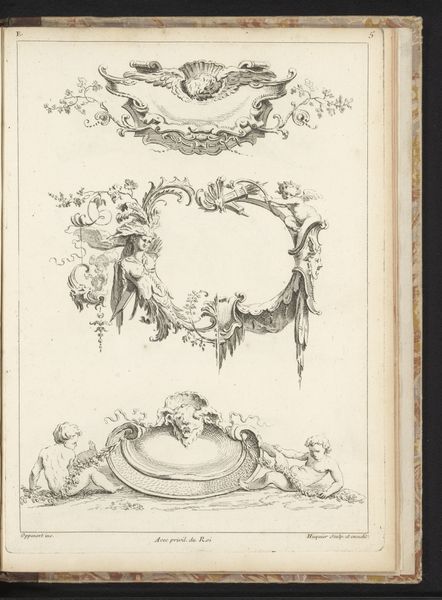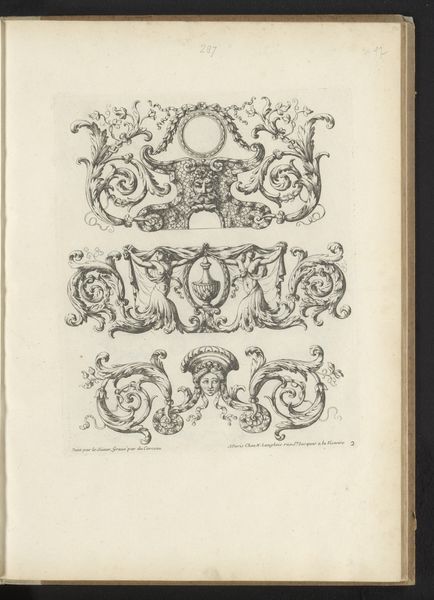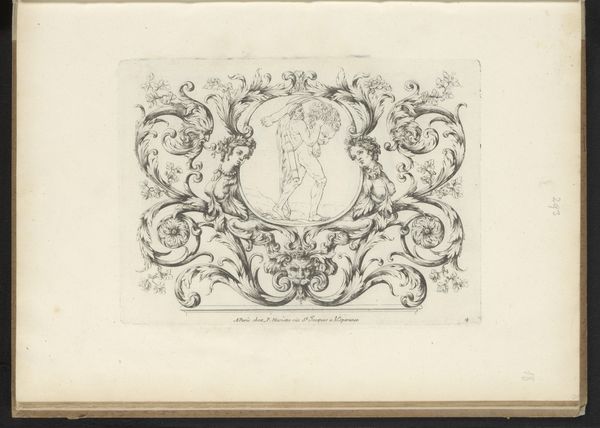
drawing, ink, pen, engraving
#
drawing
#
allegory
#
baroque
#
figuration
#
ink
#
pen
#
history-painting
#
decorative-art
#
engraving
Dimensions: height 300 mm, width 185 mm
Copyright: Rijks Museum: Open Domain
Curator: This artwork, currently held in the Rijksmuseum, is called "Two Panels with Actaeon and a Pelican". Attributed to Paul Androuet Ducerceau, these engravings date sometime between 1650 and 1703. Editor: Hmm, intricate! They look like sophisticated doodles. Like something a bored but incredibly skilled royal court member might have sketched while listening to a particularly dull sonnet. Do you think that baroque ornamentation *ever* got a day off? Curator: Well, "bored doodles" is one way to put it. Functionally, these panels offer examples of Baroque decorative arts intended for broader dissemination; such prints could be purchased by artisans to assist their designs. Editor: So like, 17th century clip art? Though you’ve got this figure on the left—Actaeon, right, with the hounds—he seems like a really burdened figure despite all the curlicues. A sense of weight among the lightness. Is that just me? Curator: Actaeon, yes. It’s important to consider the cultural currency of these images, as you intuited. The story of Actaeon being punished by Diana and torn apart by his own hunting dogs for witnessing her bathing was well-known during this era; this lends to some sense of underlying cultural pathos. And these images certainly speak to the wealth and power concentrated within aristocratic patronage. Editor: Pathos and power, I like that alliteration! Still, all those perfectly placed leaves… I feel like I’d be sneezing glitter for a week if I hung around too long. Curator: The emphasis on classical forms of ornamentation, like floral patterns, mythical subjects, busts of nobility were deliberately displayed as ideal of beauty, taste, refinement. These panels offered models for replication and adaptation by other artists and craftspeople, essentially perpetuating the influence of courtly aesthetic standards and solidifying the social standing of people depicted here. Editor: So the beautiful people get *more* beautiful…It really is all a circle, isn't it? Anyway, I am off to make some sophisticated doodles now. Wish me luck...maybe they’ll end up here someday too. Curator: Indeed. By looking at images such as these engravings, we’re invited to consider how social, cultural and artistic dynamics interacted with each other back in the seventeenth century to set precedents and inspire movements which resonate to this day.
Comments
No comments
Be the first to comment and join the conversation on the ultimate creative platform.
